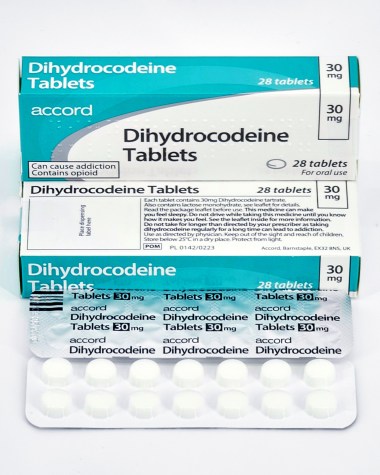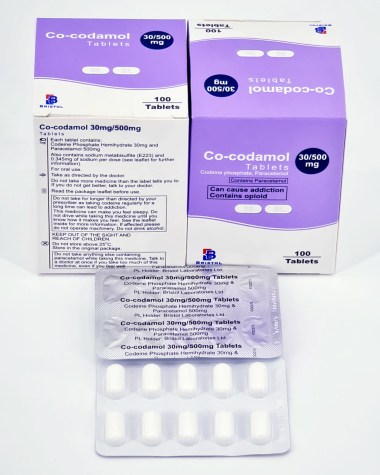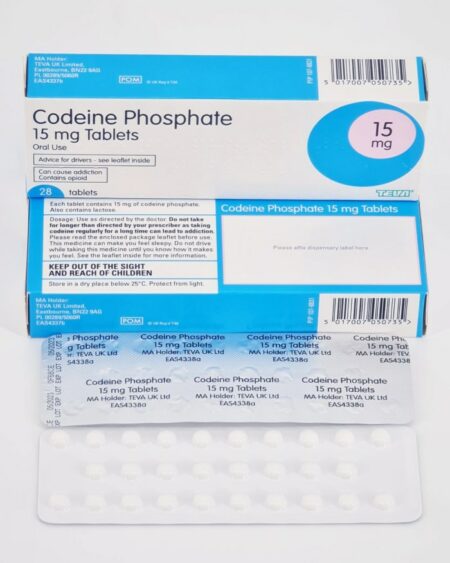Pain killers
Showing all 8 resultsSorted by popularity
Painkillers lessen or alleviate headaches, aching muscles, arthritis, and other aches and pains. There are several pain medications, and each one has pros and disadvantages. Certain forms of pain respond better than others to specific medications, and each individual may also react somewhat differently to pain medication.
Types of Pain Killers
Painkillers, commonly known as analgesics, prevent the brain from receiving pain messages. Several forms of analgesics include non-steroidal anti-inflammatory medications (NSAIDs), opiates, and local anesthetics.
Most individuals only need to take painkillers for a shorter time, while some require long-term treatment. Several medications are available at pharmacies, including certain NSAIDs, paracetamol, and mild opioids (codeine or dihydrocodeine). If you purchase medications containing mild opioids and need to use them for more than three days, you must consult your chemist or physician.
Analgesics are medications used to relieve pain. Many analgesics are available and marketed under distinct brand names orally in the form of liquids, pills, or capsules.
- By injection.
- As suppositories administered via the rectum.
- Several analgesics are also available as creams, ointments, and patches.
There are many different forms of painkillers, but there are only three primary categories (each works differently). The following are:
- Non-steroidal anti-inflammatory medications (NSAIDS). NSAIDs include ibuprofen, diclofenac, and naproxen, among others. Aspirin is an NSAID as well. Nevertheless, it is mostly used (in modest dosages) to prevent blood clots, for example, in patients with a previous heart attack.
- Paracetamol.
- Strong opioids and weak opioids (sometimes called opiates). Codeine and dihydrocodeine are examples of weak opioids. While they are generally referred to as “weak opioids,” they are highly effective analgesics frequently used to treat severe pain; yet, they can lead to major addiction and harmful consequences, so they should not be undervalued. Strong opioids include morphine, oxycodone, pethidine, and tramadol. Many individuals who require powerful opioids are hospitalized.
Sometimes, different painkillers are mixed into a single pill, such as paracetamol and codeine (co-codamol).
Strong Pain Killers
Strong painkillers are frequently used to treat back pain, which is a prevalent ailment that affects a large number of individuals. Poor posture, injuries, or medical disorders such as ruptured discs or arthritis can contribute to back discomfort. Those suffering from severe back pain might find relief from strong medicines.
Strong Pain Killers for Back Pain
Opioids such as oxycodone, morphine, and fentanyl are among the most often recommended strong painkillers for back pain. Dangers and adverse effects accompany the pain-relieving efficacy of these drugs.
Opioids are extremely addictive, and long-term usage can result in physical dependency. In addition, they can induce sleepiness, nausea, constipation, and respiratory depression. Opioids should only be administered under the supervision of a medical practitioner and for a limited duration.
Back pain can also be effectively managed with non-opioid drugs. Tramadol, for instance, is a painkiller that is believed to be milder than opioids, yet it is nevertheless effective in treating moderate to severe pain. It functions by inhibiting the brain’s transmission of pain sensations.
What Are The Most Effective Pain Medicines?
In general, opioid analgesics are the most potent painkillers. Regarding pain-relieving efficacy, morphine is the standard medication in this class, with other opioids ranking either above or below it. Codeine, frequently taken with acetaminophen to treat pain, such as that brought on by dental work, is near the bottom of the list.
- Codeine has around one-tenth the potency of morphine. Hydromorphone and oxymorphone are opioids with greater potency than morphine.
- In its intravenous form, however, fentanyl is between 70 and 100 times more powerful than morphine. Also available as a long-release patch (Duragesic) and a lozenge that dissolves in the mouth is Fentanyl (Actiq).
- Sufentanil is significantly more potent than fentanyl, although its application is now confined to intravenous administration only. Nevertheless, a sufentanil-containing transdermal patch is undergoing clinical studies.
Warnings and Precautions with Pain Medications
- Acetaminophen is potentially harmful to the liver and should be taken cautiously, if at all, in individuals with liver disease. The highest suggested amount of acetaminophen is 4 grams per 24 hours; however, moderate-to-heavy alcohol consumers must reduce their dosage.
- NSAIDs may induce gastrointestinal hemorrhage. To prevent this, they should be consumed with meals. These medications may induce renal failure in patients with liver or kidney disease. Moreover, several NSAIDs raise the risk of cardiovascular events.
- Opioid analgesics may cause addiction. Since these painkillers might cause drowsiness, operating a motor vehicle or heavy machinery may be hazardous while taking them. Opioids may impede respiration. Combining opioids with alcohol or certain other centrally-acting substances may exacerbate this effect.
- With fentanyl transdermal patches, deaths, and severe adverse effects have occurred. Inexperienced opiate users are not suggested to begin treatment with Fentanyl patches. Sunlight, hot baths, and heating pads can accelerate the rate of fentanyl release from patches.
- Fentanyl buccal tablets have just one indication: the management of breakthrough pain in opiate-tolerant cancer patients utilizing opioids. The use of fentanyl buccal tablets inappropriately has resulted in mortality.
- Methadone can have cardiac effects. Before initiating methadone therapy, patients should have an Electrocardiogram to identify any irregularities.
- Most muscle relaxants produce sleepiness. Metaxalone and chlorzoxazone should be used with care for liver disease patients. Dantrolene is potentially hepatotoxic. Carisoprodol consumption may develop into dependency.
- Anxiolytics and anti anxiety medication, particularly those in the benzodiazepine family, may induce drowsiness. A sudden withdrawal from these substances might cause convulsions and even death.
- Some antidepressants may induce sleepiness. The older antidepressants (the tricyclics) interact with various medications, sometimes with catastrophic consequences, and can impact the cardiovascular system.
- Suicidal ideation should be monitored in patients using anticonvulsants and newer antidepressants.
- In general, oral corticosteroids for acute inflammation should not be abruptly discontinued. Typically, dosages are reduced gradually over time, and patients must strictly adhere to recommendations.
Where to Buy Painkillers?
You can buy Painkillers from ukpromed online pharmacy in UK. It is easy to buy Painkillers from Ukpromeds. Your medicine will be on your doorstep.
Conclusion
To summarise, painkillers are a vital tool in pain management, especially for patients who suffer from severe or chronic pain. Opioids and other potent analgesics can be beneficial in treating back pain, but they include dangers and adverse effects. It is essential to utilize painkillers under a healthcare expert’s supervision and investigate non-medication pain management solutions. Several individuals can find relief from back pain and enhance their quality of life with proper care.








